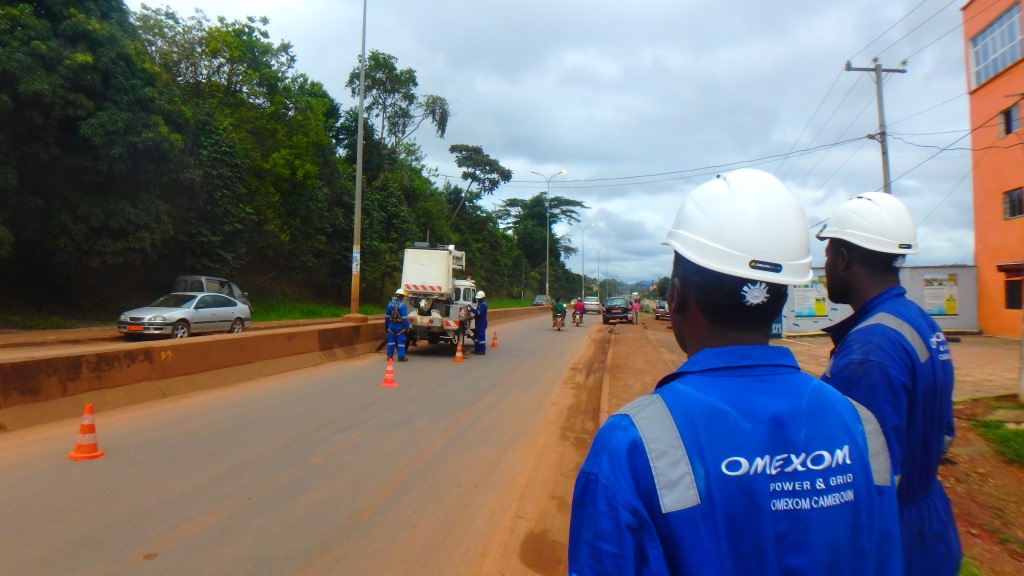Creation of an urban microgrid in the heart of Cameroon’s capital city
The city of Yaoundé entrusted Omexom with the implementation of an integrated solution for local energy production, storage and management. The project has significant implications for this African city’s 2.7 million residents and businesses.
Every day from 6 pm to 8 pm, when the street lighting comes on, Yaoundé consistently suffers power cuts. To mitigate these problems, Yaoundé Urban Community wanted to develop a project to secure the energy supply for its public infrastructure – street lighting and the city council buildings.
72% energy saving
Omexom in Cameroon has been working with Yaoundé Urban Community for twenty years to install and maintain the city’s street lights. In 2019, Omexom experts and the city’s technical managers came up with an innovative solution: an urban microgrid teamed with an intelligent management system. The project is being tested on a small scale to begin with, before being rolled out across the entire city.
New, more energy-efficient street lighting, fitted with LEDs, was installed. A smart system for local renewable energy production and storage was implemented to ensure better management of energy production and consumption. The target is to make a 72% energy saving and an 83% reduction in operational expenditure.
“The city now has the resources to reproduce the pilot installation across the entire urban area, as part of a multi-year project with a six-year return on investment”, explains Laurence Vaux, VP Business Development of the VINCI Energies Oil & Gas African Division.“The energy and maintenance savings generated make it possible to recoup the infrastructure investments quickly and free up more and more investment capabilities throughout the contract’s duration.”
Intelligent microgrid management
In addition to their improved energy performance, the city’s 7,040 lights are also digital! The lighting poles are connected to a low-bandwidth LoRa communications network, making it possible to transmit information, in particular about equipment breakdowns. Sensor data is sent to a computerised maintenance management system (CMMS) and a hypervisor, which displays all the information centrally.
The target is to make a 72% energy saving and an 83% reduction in operational expenditure.
Maintenance teams can intervene more quickly and repair damaged equipment. Yaoundé city councillors have a dashboard to provide an operational overview of all installed equipment, and manage energy consumption and production.
Energy management system
In the Yaoundé city council car park, photovoltaic panels (30 kWp) are mounted on sun canopies and connected to an energy management system. Every evening, when demand peaks, the energy management system decides in real time whether to direct the energy produced to the street lights or to the council buildings. The central battery can meet 100% of the power needs of both lighting and buildings for 30 minutes, or 50% for an hour.
Training local teams
Transferring skills is an integral part of this project. A training programme focused on familiarising them with the systems will be organised for local technical teams. A separate programme of training and workshops aimed at management teams will be provided to formalise feedback on the feasibility studies, the innovative proposed contract framework and return on investment for the project.
Arnaud Allix, head of Omexom Cameroon, says: “Of course, it will be necessary to consolidate skills at the council, through a training programme aimed at technicians and managers to ensure their ownership of the project and prepare the way for scaling up the pilot project to city-wide level.”
To find out more about this project, read the Agility Effect article.



